
The Project Gutenberg EBook of Child's Own Book of Great Musicians: Grieg, by Thomas Tapper This eBook is for the use of anyone anywhere at no cost and with almost no restrictions whatsoever. You may copy it, give it away or re-use it under the terms of the Project Gutenberg License included with this eBook or online at www.gutenberg.org Title: Child's Own Book of Great Musicians: Grieg Author: Thomas Tapper Release Date: January 28, 2011 [EBook #35097] Language: English Character set encoding: ISO-8859-1 *** START OF THIS PROJECT GUTENBERG EBOOK CHILD'S OWN BOOK: GRIEG *** Produced by Juliet Sutherland, Ernest Schaal, and the Online Distributed Proofreading Team at https://www.pgdp.net


Directions for Binding
Enclosed in this envelope is the cord and the needle with which to bind this book. Start in from the outside as shown on the diagram here. Pass the needle and thread through the center of the book, leaving an end extend outside, then through to the outside, about 2 inches from the center; then from the outside to inside 2 inches from the center at the other end of the book, bringing the thread finally again through the center, and tie the two ends in a knot, one each side of the cord on the outside.
THEO. PRESSER CO., Pub's., Phila., Pa.
HOW TO USE THIS BOOK
This book is one of a series known as the CHILD'S OWN BOOK OF GREAT MUSICIANS, written by Thomas Tapper, author of "Pictures from the Lives of the Great Composers for Children," "Music Talks with Children," "First Studies in Music Biography," and others.
The sheet of illustrations included herewith is to be cut apart by the child, and each illustration is to be inserted in its proper place throughout the book, pasted in the space containing the same number as will be found under each picture on the sheet. It is not necessary to cover the entire back of a picture with paste. Put it only on the corners and place neatly within the lines you will find printed around each space. Use photographic paste, if possible.
After this play-work is completed there will be found at the back of the book blank pages upon which the child is to write his own story of the great musician, based upon the facts and questions found on the previous pages.
The book is then to be sewed by the child through the center with the cord found in the enclosed envelope. The book thus becomes the child's own book.
This series will be found not only to furnish a pleasing and interesting task for the children, but will teach them the main facts with regard to the life of each of the great musicians—an educational feature worth while.
This series of the Child's Own Book of Great Musicians includes at present a book on each of the following:
| Bach | Grieg | Mozart |
| Beethoven | Handel | Nevin |
| Brahms | Haydn | Schubert |
| Chopin | Liszt | Schumann |
| Dvořák | MacDowell | Tschaikowsky |
| Foster | Mendelssohn | Verdi |
| Wagner |



EDVARD GRIEG
The Story of the Boy Who
Made Music in the Land
of the Midnight Sun
This Book was made by
Philadelphia
Theodore Presser Co.
1712 Chestnut Str.
Copyright, 1921, by Theo. Presser Co.
British Copyright Secured
Printed in U. S. A.
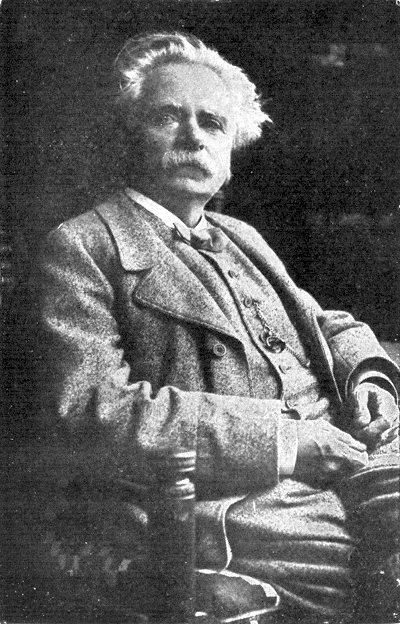
NAME
BORN
DIED
The Story of the Boy Who Made Music
in the Land of the Midnight Sun
This is the picture of a boy who was born in the north of the world. He loved his mother country and the music which the people sang.
But he had music, all his own, that sang and sang in his heart. It was happy music and sad; solemn and joyous. You will hear it some day and love it all.
Even when this little boy was in the primary school the music knocked at his heart's door as if it would say:
"Let me out into the world so that people may hear me."
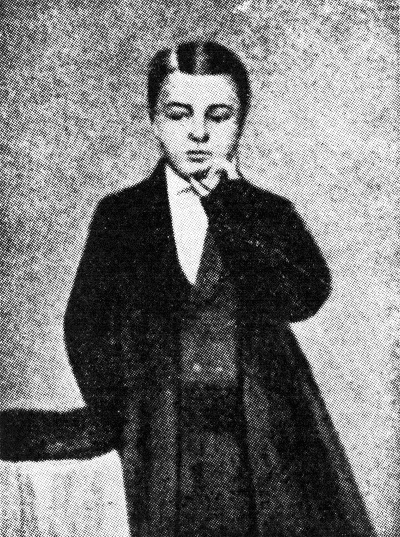
When he was twelve years old he started out one morning as usual, but instead of taking his school books he took with him his music writing book which contained what he termed "Variation on a German Melody Op. 1."
Can you not imagine how proud he must have been of his Op. 1?
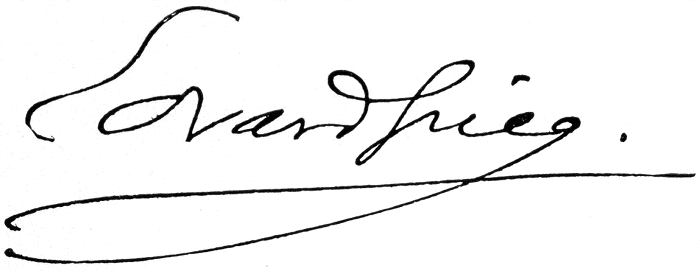
His schoolmates were very proud to see the music of their companion Edvard. But alas! While they were looking at it and talking about it, whom do you think came creeping up behind them?
Why, the schoolmaster, to be sure.
He gave little Edvard a rough shaking up and told him how severely he would be punished if ever again he brought such nonsense to school.
Poor old schoolmaster! He did not know what Edvard Grieg would one day mean to the land and people of Norway. For Edvard loved not only the music that kept singing in him, but he loved Norway and all its people. Do you think any one could help loving such mountains as these?
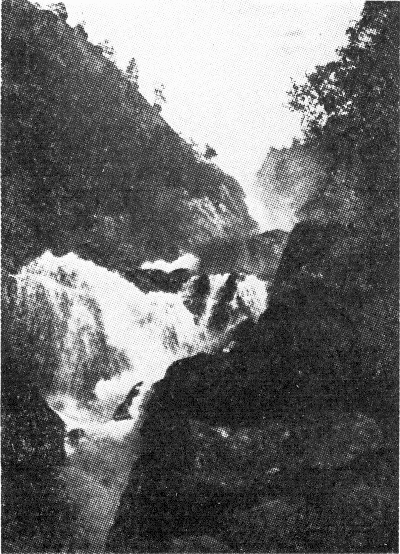
But all the grown up folks of Edvard's world did not call his music rubbish. His mother loved music and played beautifully. It was from her that Edvard had his first lessons, just as Mendelssohn was first taught by his mother.
Then one day something wonderful happened. A great violinist, Ole Bull by name, visited the Grieg family in the country. He was so kind to the little composer that the boy just loved him.
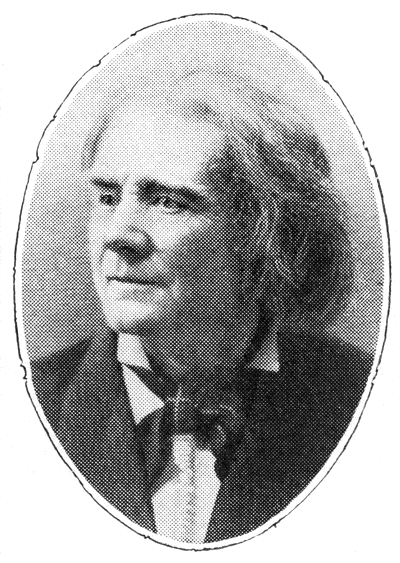
Ole Bull had traveled the world over playing the violin. He looked over Edvard's compositions and made the boy play them to him. You can see him nodding his head in pleasure as he listens. His fine eyes are lighted up. He tells the boy composer that his music is quite good, but that there is a lot for him to learn yet. So he must study earnestly and make many sacrifices.
Then Ole Bull sits down and talks with Father and Mother Grieg. It is a serious talk, as one can see. Finally, when the talk is finished, Ole Bull takes the wondering boy by the hand and says to him:
"You are going to Leipzig to study and become a fine musician."
So Edvard Grieg left his home city, Bergen, its mountains, its fjords, its people, his father and mother, and traveled south through Norway, across the water and into Germany. No doubt he was a lonesome boy. Life had become serious all at once and there was much to be done.
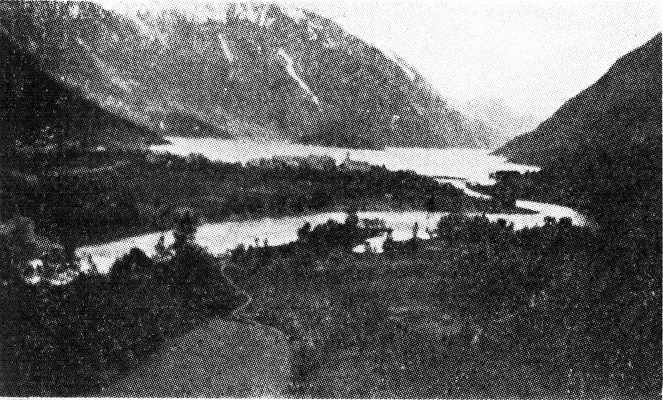
It was all strange and new. Instead of hills and the waters of the fjords, there were tall, dark houses, gloomy streets, and such a lot of hurrying people.
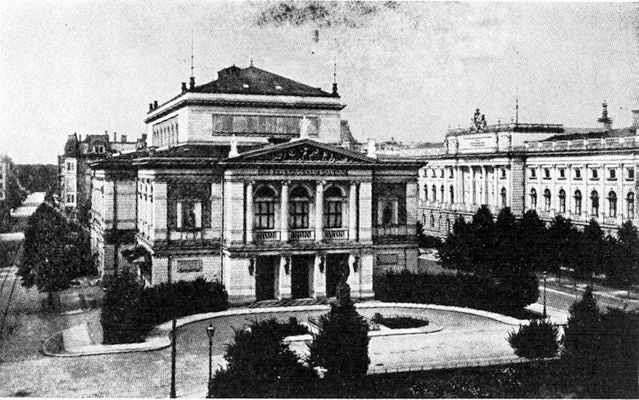
But he soon grew used to it all and was busy as could be with lessons in piano and harmony. Just as in the earlier days in school, so in Leipzig, Edvard wrote music as it sounded in his heart. In the harmony lessons he could not make himself write plain chords to the bass which was given him as an exercise. He wrote the light, airy, lovely, fanciful tunes and rhythms that were singing within him. And just like the schoolmaster at home, the harmony teacher shouted at him, saying:
"No, that is all wrong!"
His harmony teacher was E. F. Richter.
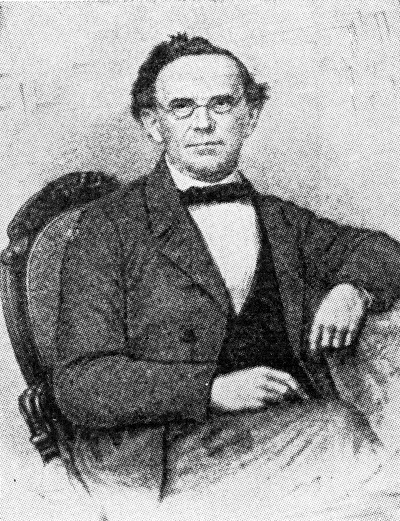
But you remember that Ole Bull understood the boy's music. While here in Leipzig there were many who understood it too.
Bit by bit Edvard made friends who loved to listen to his pieces. One of them was Niels Gade, a fine musician in Denmark, who was a friend of Schumann's, who one time, wrote a Northern Song on the letters on Gade's name. It begins like this:
And Edvard too once wrote a fugue on the letters G-A-D-E.
So inspiring was his music study that Edvard worked very hard. He composed a great deal of music which slowly made friends for him. Robert Schumann was one who spoke kindly of the young Norwegian and his music. And so he grew and improved. Because he was true to his talent, he made many friends not only in Leipzig but throughout Europe, as we shall see.
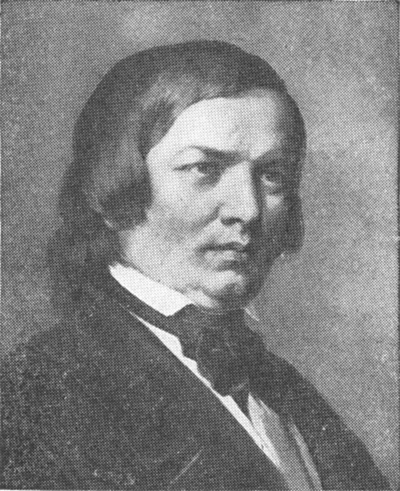
You will learn some day the names of many of the people who became friends of Grieg. There were Rikard Nordraak, and later on Franz Liszt. Grieg became one of the group of great Norwegian artists in which Henrik Ibsen and Bjornstjerne Bjornson were prominent. Indeed, Grieg wrote the music to Ibsen's Peer Gynt. One of the great pleasures of Grieg's life was Bjornson's Patriotic Poem to his own music.
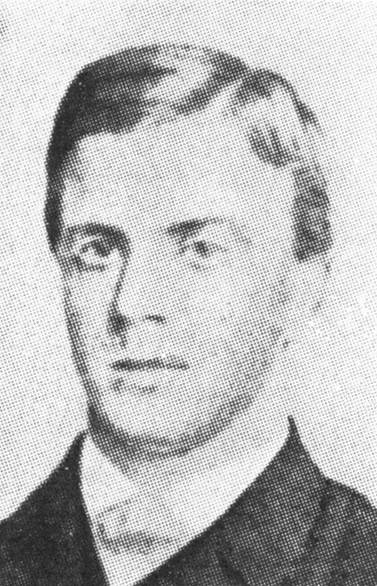
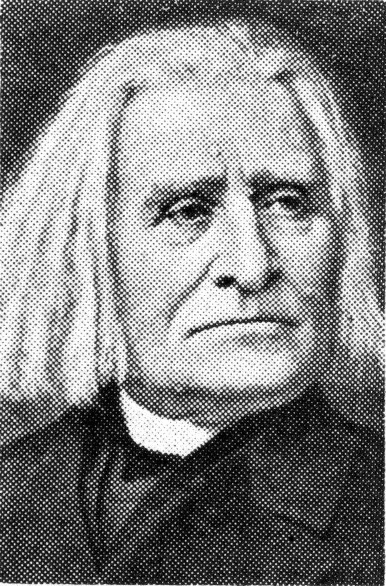
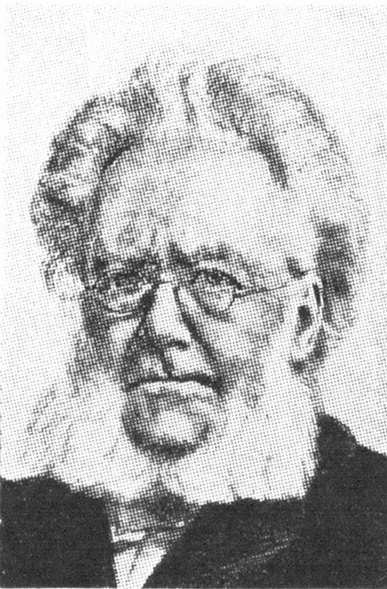
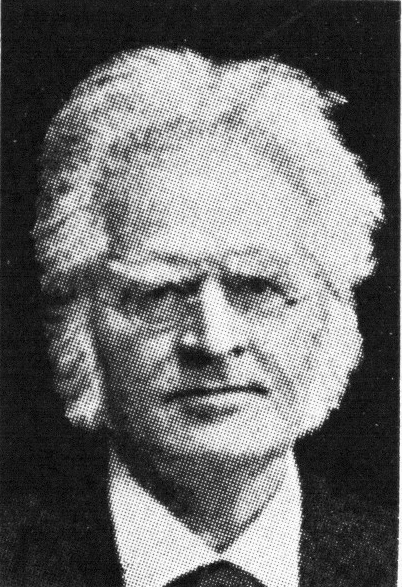
One day Grieg showed Gade a composition called In Autumn which Gade did not like. "It is too Norwegian," he said. This pleased Grieg, although Gade told him to go home and write something better. He was nearly as rough as Grieg's schoolmaster.
But one day later a prize was offered in Sweden for an orchestral composition. Grieg's In Autumn won the prize. And Gade was one of the judges. We wonder if he forgot about it!
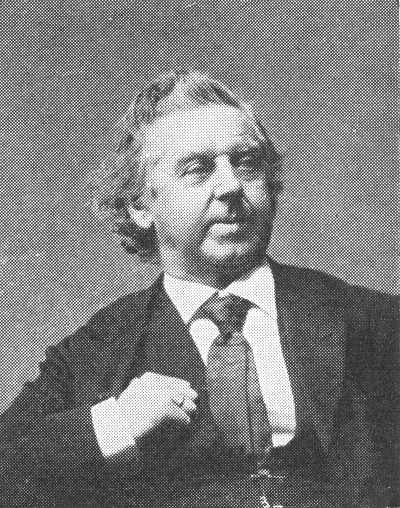
Grieg married his cousin Mina Hagerup, to whom he dedicated his famous song: I Love Thee. But the mother of his bride did not think highly of him.
"He is a nobody," she said, "who writes music that no one cares to listen to."
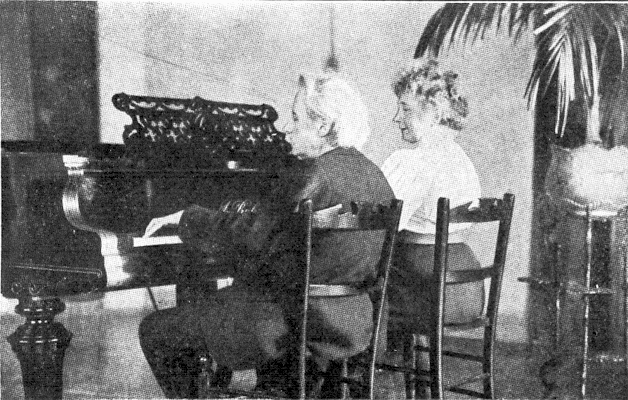
But people were beginning to listen. After a concert in Christiania, entirely of Norwegian music, the Government gave Grieg a small pension and he went to Rome.
Here he had a fine meeting with Liszt who asked Grieg to play. Then Liszt took Grieg's manuscript and played it at sight, to his great delight.
When Grieg bade good-bye to Liszt the famous pianist said to him:
"Keep on, you have talent and ability. Do not let any one discourage or frighten you."
So sensitive was Grieg about music writing that he never allowed any one to watch him. So he had a little house built in the mountains where he could work at his leisure. This he called his "tune house." There was only one room and it was for all the world like a little play house that children have. In it was his piano and often when he was playing, the Norwegian peasants used to group themselves outside the door, sometimes joining in the singing, and then again dancing to their delightful folktunes and dances.
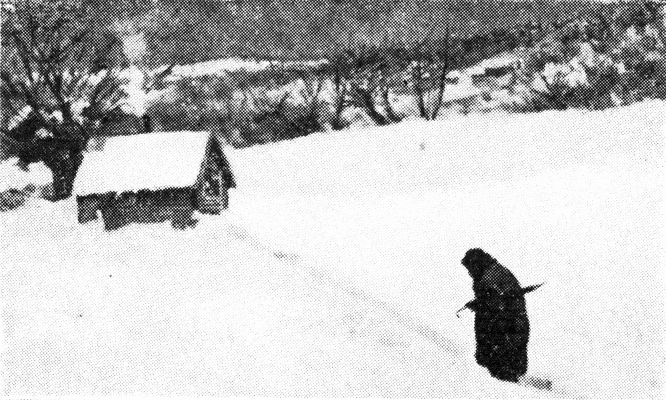
Here are some pictures of Grieg as he looked in later years.
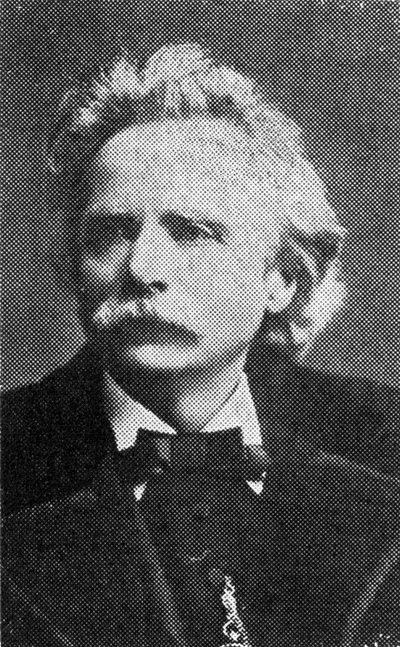
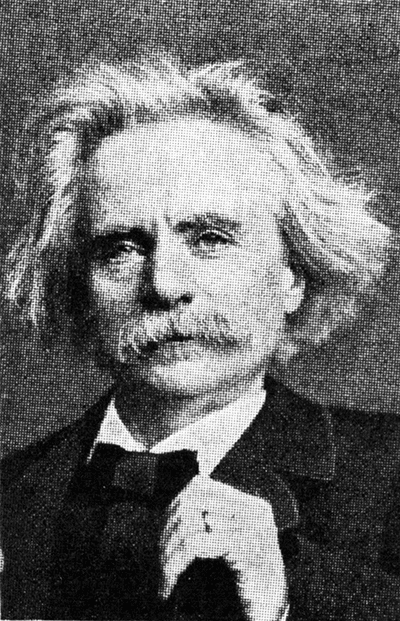
As a boy in Leipzig he worked too hard and sickness made it necessary for him to return home. From this sickness he never fully recovered. All his life he was frail and unable to endure severe tasks.
In appearance Grieg was short and rather bent in figure. His hands were thin, but fine and strong for the piano, although one of them had been crushed in an accident. His eyes were deep blue. They looked straight at you and were full of life and kindness.
Grieg was merry of nature; a lovely companion, full of fun and company. Sometimes, however, he was sad and melancholy like his own music.
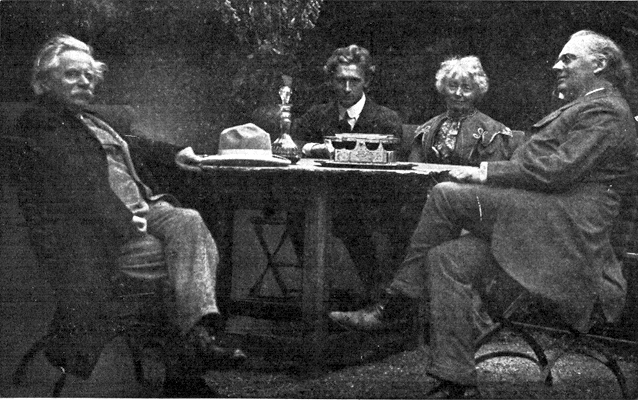
Some day you will learn the names of many of his compositions. And among them you will love such pieces as The Birds, In Spring Time, Arietta, the Peer Gynt Music, the Piano Sonata, the Piano and Violin Sonata, and lots of lively Norwegian dances and tunes. Indeed, he has composed many compositions which you will number among your favorite pieces.
Three great names stand out more than all others in the musical history of Scandinavia. You have learned two, Edvard Grieg and Ole Bull. The other is Jenny Lind, known as "the Swedish nightingale," who was loved not only for her wonderful voice but for her kindness and noble nature. She was born at Stockholm in 1820 and died in England in 1887. In Sweden to this day Jennie Lind is a great national personage. The people look upon her as we would on Washington, Irving, Lincoln or Longfellow. She was very beautiful.
Here is her picture.
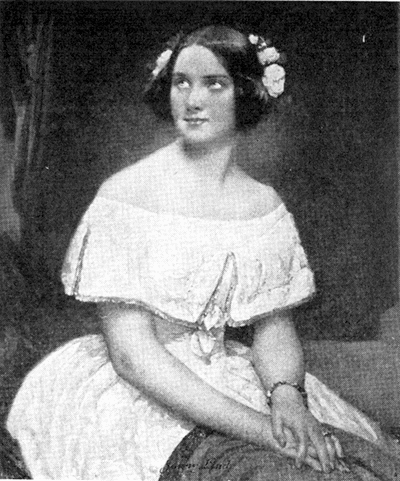
SOME FACTS ABOUT EDVARD GRIEG
When you have read this page and the next make a story about Grieg's life. Write it in your own words. When you are quite sure you cannot improve it, copy it on pages 15 and 16.
1. Grieg was born June 15, 1843, near Bergen, Norway.
2. His father's ancestors were Scotch folk who went to Norway after the Battle of Culloden, in 1745.
3. It was Grieg's mother who gave him his first lessons.
4. One of his best friends—and one who did much for him—was Ole Bull, the great violinist.
5. Grieg studied at the Leipzig Conservatory.
6. His teachers were Moscheles, Hauptmann (who liked his music), Richter, and Papperitz.
7. Sir Arthur Sullivan, who composed the opera, Pinafore, was one of Grieg's fellow students at Leipzig. Dudley Buck, the American composer, was there at the same time.
8. Among Grieg's friends were Gade, Nordraak, Ibsen, Bjornson and Svendsen.
9. He married his cousin, Mina Hagerup, who was a fine singer.
10. Grieg composed for the piano, voice, violin, and for the orchestra.
11. Grieg wrote music to Ibsen's Peer Gynt, at the poet's request.
12. The Norwegian Government granted Grieg a pension, so that he could be free to devote himself to composition.
13. He died September 3, 1907.
SOME QUESTIONS TO ANSWER
1. When and where was Grieg born?
2. Name some famous men of his country.
3. Who was his first teacher?
4. Through whose advice did he go to the Conservatory at Leipzig?
5. What Danish composer gave Grieg good advice about his compositions?
6. Who were some of Grieg's teachers?
7. What composition by Grieg was given first prize in the contest in Sweden?
8. What famous song did Grieg dedicate to Mina Hagerup?
9. Tell about Grieg's visit to Liszt in Rome.
10. Name as many of his compositions as you can. How many have you heard?
11. Tell what you know about Grieg's personal appearance.
12. When did Grieg die? How old was he?
13. Who was Jenny Lind?
THE STORY OF EDVARD GRIEG
Written by.............................
On (date).............................
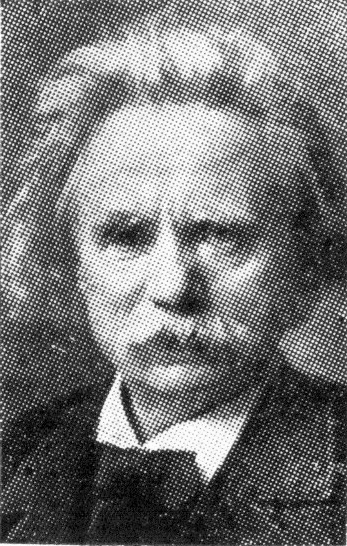
End of the Project Gutenberg EBook of Child's Own Book of Great Musicians:
Grieg, by Thomas Tapper
*** END OF THIS PROJECT GUTENBERG EBOOK CHILD'S OWN BOOK: GRIEG ***
***** This file should be named 35097-h.htm or 35097-h.zip *****
This and all associated files of various formats will be found in:
https://www.gutenberg.org/3/5/0/9/35097/
Produced by Juliet Sutherland, Ernest Schaal, and the
Online Distributed Proofreading Team at https://www.pgdp.net
Updated editions will replace the previous one--the old editions
will be renamed.
Creating the works from public domain print editions means that no
one owns a United States copyright in these works, so the Foundation
(and you!) can copy and distribute it in the United States without
permission and without paying copyright royalties. Special rules,
set forth in the General Terms of Use part of this license, apply to
copying and distributing Project Gutenberg-tm electronic works to
protect the PROJECT GUTENBERG-tm concept and trademark. Project
Gutenberg is a registered trademark, and may not be used if you
charge for the eBooks, unless you receive specific permission. If you
do not charge anything for copies of this eBook, complying with the
rules is very easy. You may use this eBook for nearly any purpose
such as creation of derivative works, reports, performances and
research. They may be modified and printed and given away--you may do
practically ANYTHING with public domain eBooks. Redistribution is
subject to the trademark license, especially commercial
redistribution.
*** START: FULL LICENSE ***
THE FULL PROJECT GUTENBERG LICENSE
PLEASE READ THIS BEFORE YOU DISTRIBUTE OR USE THIS WORK
To protect the Project Gutenberg-tm mission of promoting the free
distribution of electronic works, by using or distributing this work
(or any other work associated in any way with the phrase "Project
Gutenberg"), you agree to comply with all the terms of the Full Project
Gutenberg-tm License (available with this file or online at
https://gutenberg.org/license).
Section 1. General Terms of Use and Redistributing Project Gutenberg-tm
electronic works
1.A. By reading or using any part of this Project Gutenberg-tm
electronic work, you indicate that you have read, understand, agree to
and accept all the terms of this license and intellectual property
(trademark/copyright) agreement. If you do not agree to abide by all
the terms of this agreement, you must cease using and return or destroy
all copies of Project Gutenberg-tm electronic works in your possession.
If you paid a fee for obtaining a copy of or access to a Project
Gutenberg-tm electronic work and you do not agree to be bound by the
terms of this agreement, you may obtain a refund from the person or
entity to whom you paid the fee as set forth in paragraph 1.E.8.
1.B. "Project Gutenberg" is a registered trademark. It may only be
used on or associated in any way with an electronic work by people who
agree to be bound by the terms of this agreement. There are a few
things that you can do with most Project Gutenberg-tm electronic works
even without complying with the full terms of this agreement. See
paragraph 1.C below. There are a lot of things you can do with Project
Gutenberg-tm electronic works if you follow the terms of this agreement
and help preserve free future access to Project Gutenberg-tm electronic
works. See paragraph 1.E below.
1.C. The Project Gutenberg Literary Archive Foundation ("the Foundation"
or PGLAF), owns a compilation copyright in the collection of Project
Gutenberg-tm electronic works. Nearly all the individual works in the
collection are in the public domain in the United States. If an
individual work is in the public domain in the United States and you are
located in the United States, we do not claim a right to prevent you from
copying, distributing, performing, displaying or creating derivative
works based on the work as long as all references to Project Gutenberg
are removed. Of course, we hope that you will support the Project
Gutenberg-tm mission of promoting free access to electronic works by
freely sharing Project Gutenberg-tm works in compliance with the terms of
this agreement for keeping the Project Gutenberg-tm name associated with
the work. You can easily comply with the terms of this agreement by
keeping this work in the same format with its attached full Project
Gutenberg-tm License when you share it without charge with others.
1.D. The copyright laws of the place where you are located also govern
what you can do with this work. Copyright laws in most countries are in
a constant state of change. If you are outside the United States, check
the laws of your country in addition to the terms of this agreement
before downloading, copying, displaying, performing, distributing or
creating derivative works based on this work or any other Project
Gutenberg-tm work. The Foundation makes no representations concerning
the copyright status of any work in any country outside the United
States.
1.E. Unless you have removed all references to Project Gutenberg:
1.E.1. The following sentence, with active links to, or other immediate
access to, the full Project Gutenberg-tm License must appear prominently
whenever any copy of a Project Gutenberg-tm work (any work on which the
phrase "Project Gutenberg" appears, or with which the phrase "Project
Gutenberg" is associated) is accessed, displayed, performed, viewed,
copied or distributed:
This eBook is for the use of anyone anywhere at no cost and with
almost no restrictions whatsoever. You may copy it, give it away or
re-use it under the terms of the Project Gutenberg License included
with this eBook or online at www.gutenberg.org
1.E.2. If an individual Project Gutenberg-tm electronic work is derived
from the public domain (does not contain a notice indicating that it is
posted with permission of the copyright holder), the work can be copied
and distributed to anyone in the United States without paying any fees
or charges. If you are redistributing or providing access to a work
with the phrase "Project Gutenberg" associated with or appearing on the
work, you must comply either with the requirements of paragraphs 1.E.1
through 1.E.7 or obtain permission for the use of the work and the
Project Gutenberg-tm trademark as set forth in paragraphs 1.E.8 or
1.E.9.
1.E.3. If an individual Project Gutenberg-tm electronic work is posted
with the permission of the copyright holder, your use and distribution
must comply with both paragraphs 1.E.1 through 1.E.7 and any additional
terms imposed by the copyright holder. Additional terms will be linked
to the Project Gutenberg-tm License for all works posted with the
permission of the copyright holder found at the beginning of this work.
1.E.4. Do not unlink or detach or remove the full Project Gutenberg-tm
License terms from this work, or any files containing a part of this
work or any other work associated with Project Gutenberg-tm.
1.E.5. Do not copy, display, perform, distribute or redistribute this
electronic work, or any part of this electronic work, without
prominently displaying the sentence set forth in paragraph 1.E.1 with
active links or immediate access to the full terms of the Project
Gutenberg-tm License.
1.E.6. You may convert to and distribute this work in any binary,
compressed, marked up, nonproprietary or proprietary form, including any
word processing or hypertext form. However, if you provide access to or
distribute copies of a Project Gutenberg-tm work in a format other than
"Plain Vanilla ASCII" or other format used in the official version
posted on the official Project Gutenberg-tm web site (www.gutenberg.org),
you must, at no additional cost, fee or expense to the user, provide a
copy, a means of exporting a copy, or a means of obtaining a copy upon
request, of the work in its original "Plain Vanilla ASCII" or other
form. Any alternate format must include the full Project Gutenberg-tm
License as specified in paragraph 1.E.1.
1.E.7. Do not charge a fee for access to, viewing, displaying,
performing, copying or distributing any Project Gutenberg-tm works
unless you comply with paragraph 1.E.8 or 1.E.9.
1.E.8. You may charge a reasonable fee for copies of or providing
access to or distributing Project Gutenberg-tm electronic works provided
that
- You pay a royalty fee of 20% of the gross profits you derive from
the use of Project Gutenberg-tm works calculated using the method
you already use to calculate your applicable taxes. The fee is
owed to the owner of the Project Gutenberg-tm trademark, but he
has agreed to donate royalties under this paragraph to the
Project Gutenberg Literary Archive Foundation. Royalty payments
must be paid within 60 days following each date on which you
prepare (or are legally required to prepare) your periodic tax
returns. Royalty payments should be clearly marked as such and
sent to the Project Gutenberg Literary Archive Foundation at the
address specified in Section 4, "Information about donations to
the Project Gutenberg Literary Archive Foundation."
- You provide a full refund of any money paid by a user who notifies
you in writing (or by e-mail) within 30 days of receipt that s/he
does not agree to the terms of the full Project Gutenberg-tm
License. You must require such a user to return or
destroy all copies of the works possessed in a physical medium
and discontinue all use of and all access to other copies of
Project Gutenberg-tm works.
- You provide, in accordance with paragraph 1.F.3, a full refund of any
money paid for a work or a replacement copy, if a defect in the
electronic work is discovered and reported to you within 90 days
of receipt of the work.
- You comply with all other terms of this agreement for free
distribution of Project Gutenberg-tm works.
1.E.9. If you wish to charge a fee or distribute a Project Gutenberg-tm
electronic work or group of works on different terms than are set
forth in this agreement, you must obtain permission in writing from
both the Project Gutenberg Literary Archive Foundation and Michael
Hart, the owner of the Project Gutenberg-tm trademark. Contact the
Foundation as set forth in Section 3 below.
1.F.
1.F.1. Project Gutenberg volunteers and employees expend considerable
effort to identify, do copyright research on, transcribe and proofread
public domain works in creating the Project Gutenberg-tm
collection. Despite these efforts, Project Gutenberg-tm electronic
works, and the medium on which they may be stored, may contain
"Defects," such as, but not limited to, incomplete, inaccurate or
corrupt data, transcription errors, a copyright or other intellectual
property infringement, a defective or damaged disk or other medium, a
computer virus, or computer codes that damage or cannot be read by
your equipment.
1.F.2. LIMITED WARRANTY, DISCLAIMER OF DAMAGES - Except for the "Right
of Replacement or Refund" described in paragraph 1.F.3, the Project
Gutenberg Literary Archive Foundation, the owner of the Project
Gutenberg-tm trademark, and any other party distributing a Project
Gutenberg-tm electronic work under this agreement, disclaim all
liability to you for damages, costs and expenses, including legal
fees. YOU AGREE THAT YOU HAVE NO REMEDIES FOR NEGLIGENCE, STRICT
LIABILITY, BREACH OF WARRANTY OR BREACH OF CONTRACT EXCEPT THOSE
PROVIDED IN PARAGRAPH 1.F.3. YOU AGREE THAT THE FOUNDATION, THE
TRADEMARK OWNER, AND ANY DISTRIBUTOR UNDER THIS AGREEMENT WILL NOT BE
LIABLE TO YOU FOR ACTUAL, DIRECT, INDIRECT, CONSEQUENTIAL, PUNITIVE OR
INCIDENTAL DAMAGES EVEN IF YOU GIVE NOTICE OF THE POSSIBILITY OF SUCH
DAMAGE.
1.F.3. LIMITED RIGHT OF REPLACEMENT OR REFUND - If you discover a
defect in this electronic work within 90 days of receiving it, you can
receive a refund of the money (if any) you paid for it by sending a
written explanation to the person you received the work from. If you
received the work on a physical medium, you must return the medium with
your written explanation. The person or entity that provided you with
the defective work may elect to provide a replacement copy in lieu of a
refund. If you received the work electronically, the person or entity
providing it to you may choose to give you a second opportunity to
receive the work electronically in lieu of a refund. If the second copy
is also defective, you may demand a refund in writing without further
opportunities to fix the problem.
1.F.4. Except for the limited right of replacement or refund set forth
in paragraph 1.F.3, this work is provided to you 'AS-IS' WITH NO OTHER
WARRANTIES OF ANY KIND, EXPRESS OR IMPLIED, INCLUDING BUT NOT LIMITED TO
WARRANTIES OF MERCHANTIBILITY OR FITNESS FOR ANY PURPOSE.
1.F.5. Some states do not allow disclaimers of certain implied
warranties or the exclusion or limitation of certain types of damages.
If any disclaimer or limitation set forth in this agreement violates the
law of the state applicable to this agreement, the agreement shall be
interpreted to make the maximum disclaimer or limitation permitted by
the applicable state law. The invalidity or unenforceability of any
provision of this agreement shall not void the remaining provisions.
1.F.6. INDEMNITY - You agree to indemnify and hold the Foundation, the
trademark owner, any agent or employee of the Foundation, anyone
providing copies of Project Gutenberg-tm electronic works in accordance
with this agreement, and any volunteers associated with the production,
promotion and distribution of Project Gutenberg-tm electronic works,
harmless from all liability, costs and expenses, including legal fees,
that arise directly or indirectly from any of the following which you do
or cause to occur: (a) distribution of this or any Project Gutenberg-tm
work, (b) alteration, modification, or additions or deletions to any
Project Gutenberg-tm work, and (c) any Defect you cause.
Section 2. Information about the Mission of Project Gutenberg-tm
Project Gutenberg-tm is synonymous with the free distribution of
electronic works in formats readable by the widest variety of computers
including obsolete, old, middle-aged and new computers. It exists
because of the efforts of hundreds of volunteers and donations from
people in all walks of life.
Volunteers and financial support to provide volunteers with the
assistance they need are critical to reaching Project Gutenberg-tm's
goals and ensuring that the Project Gutenberg-tm collection will
remain freely available for generations to come. In 2001, the Project
Gutenberg Literary Archive Foundation was created to provide a secure
and permanent future for Project Gutenberg-tm and future generations.
To learn more about the Project Gutenberg Literary Archive Foundation
and how your efforts and donations can help, see Sections 3 and 4
and the Foundation web page at https://www.pglaf.org.
Section 3. Information about the Project Gutenberg Literary Archive
Foundation
The Project Gutenberg Literary Archive Foundation is a non profit
501(c)(3) educational corporation organized under the laws of the
state of Mississippi and granted tax exempt status by the Internal
Revenue Service. The Foundation's EIN or federal tax identification
number is 64-6221541. Its 501(c)(3) letter is posted at
https://pglaf.org/fundraising. Contributions to the Project Gutenberg
Literary Archive Foundation are tax deductible to the full extent
permitted by U.S. federal laws and your state's laws.
The Foundation's principal office is located at 4557 Melan Dr. S.
Fairbanks, AK, 99712., but its volunteers and employees are scattered
throughout numerous locations. Its business office is located at
809 North 1500 West, Salt Lake City, UT 84116, (801) 596-1887, email
business@pglaf.org. Email contact links and up to date contact
information can be found at the Foundation's web site and official
page at https://pglaf.org
For additional contact information:
Dr. Gregory B. Newby
Chief Executive and Director
gbnewby@pglaf.org
Section 4. Information about Donations to the Project Gutenberg
Literary Archive Foundation
Project Gutenberg-tm depends upon and cannot survive without wide
spread public support and donations to carry out its mission of
increasing the number of public domain and licensed works that can be
freely distributed in machine readable form accessible by the widest
array of equipment including outdated equipment. Many small donations
($1 to $5,000) are particularly important to maintaining tax exempt
status with the IRS.
The Foundation is committed to complying with the laws regulating
charities and charitable donations in all 50 states of the United
States. Compliance requirements are not uniform and it takes a
considerable effort, much paperwork and many fees to meet and keep up
with these requirements. We do not solicit donations in locations
where we have not received written confirmation of compliance. To
SEND DONATIONS or determine the status of compliance for any
particular state visit https://pglaf.org
While we cannot and do not solicit contributions from states where we
have not met the solicitation requirements, we know of no prohibition
against accepting unsolicited donations from donors in such states who
approach us with offers to donate.
International donations are gratefully accepted, but we cannot make
any statements concerning tax treatment of donations received from
outside the United States. U.S. laws alone swamp our small staff.
Please check the Project Gutenberg Web pages for current donation
methods and addresses. Donations are accepted in a number of other
ways including including checks, online payments and credit card
donations. To donate, please visit: https://pglaf.org/donate
Section 5. General Information About Project Gutenberg-tm electronic
works.
Professor Michael S. Hart was the originator of the Project Gutenberg-tm
concept of a library of electronic works that could be freely shared
with anyone. For thirty years, he produced and distributed Project
Gutenberg-tm eBooks with only a loose network of volunteer support.
Project Gutenberg-tm eBooks are often created from several printed
editions, all of which are confirmed as Public Domain in the U.S.
unless a copyright notice is included. Thus, we do not necessarily
keep eBooks in compliance with any particular paper edition.
Most people start at our Web site which has the main PG search facility:
https://www.gutenberg.org
This Web site includes information about Project Gutenberg-tm,
including how to make donations to the Project Gutenberg Literary
Archive Foundation, how to help produce our new eBooks, and how to
subscribe to our email newsletter to hear about new eBooks.